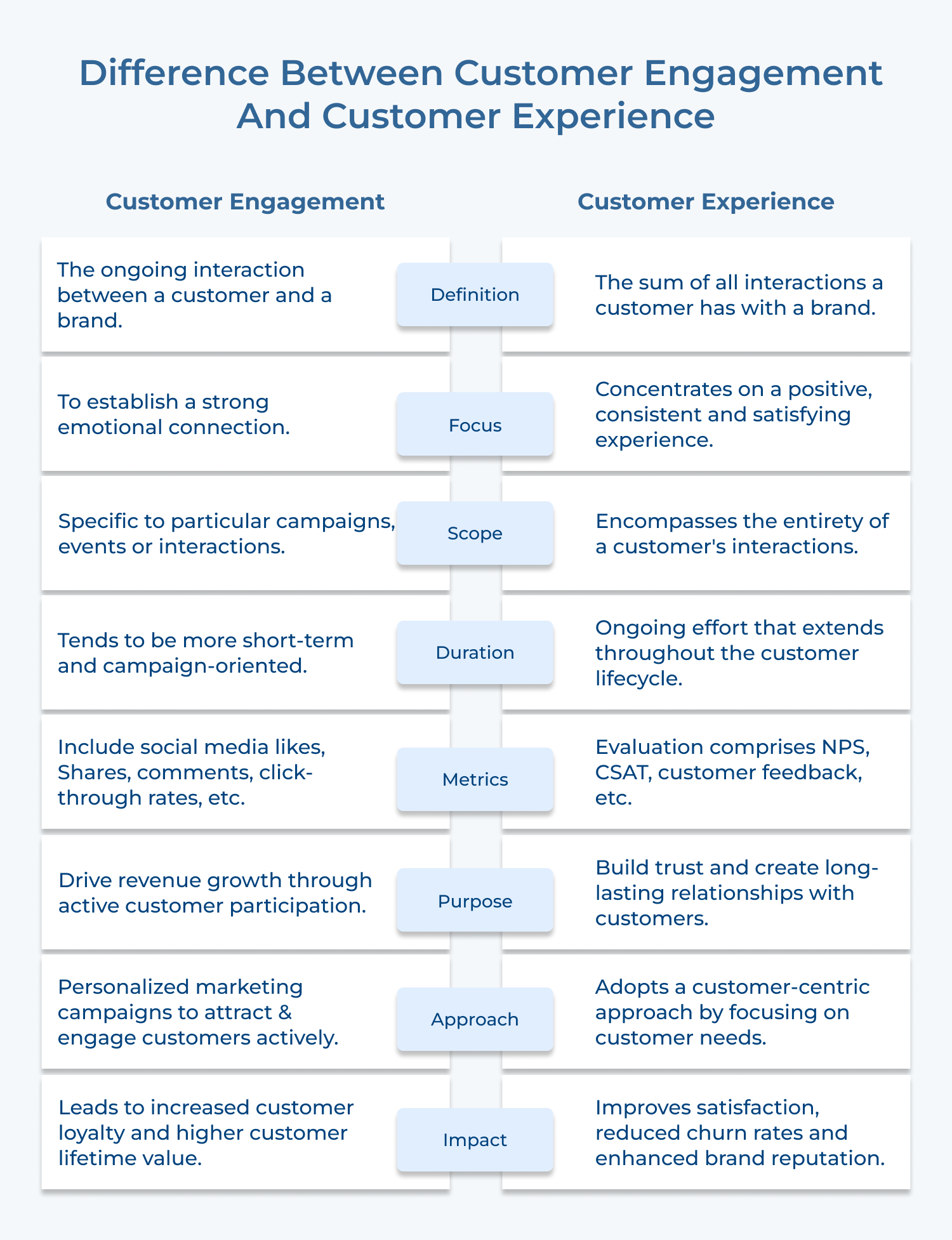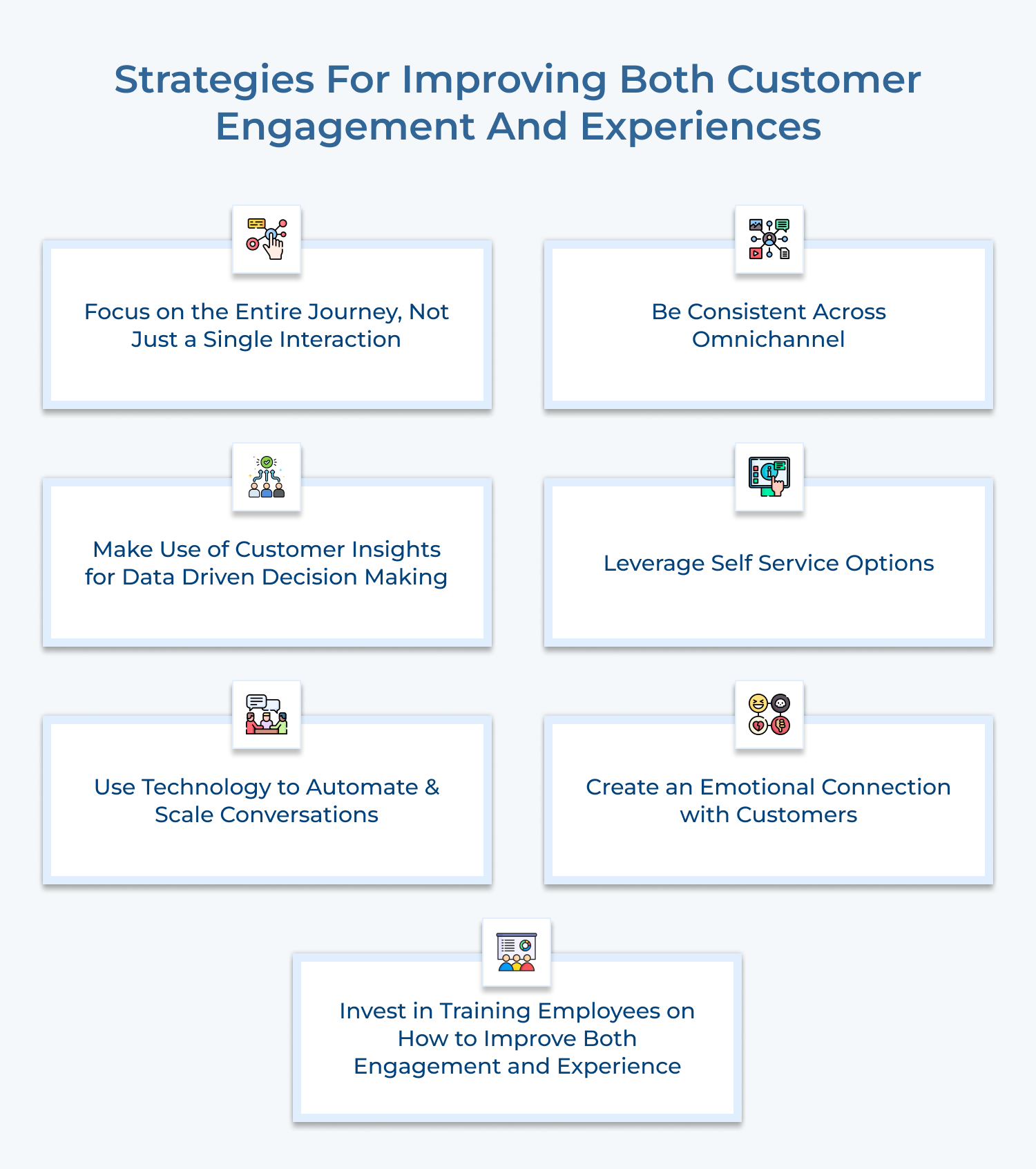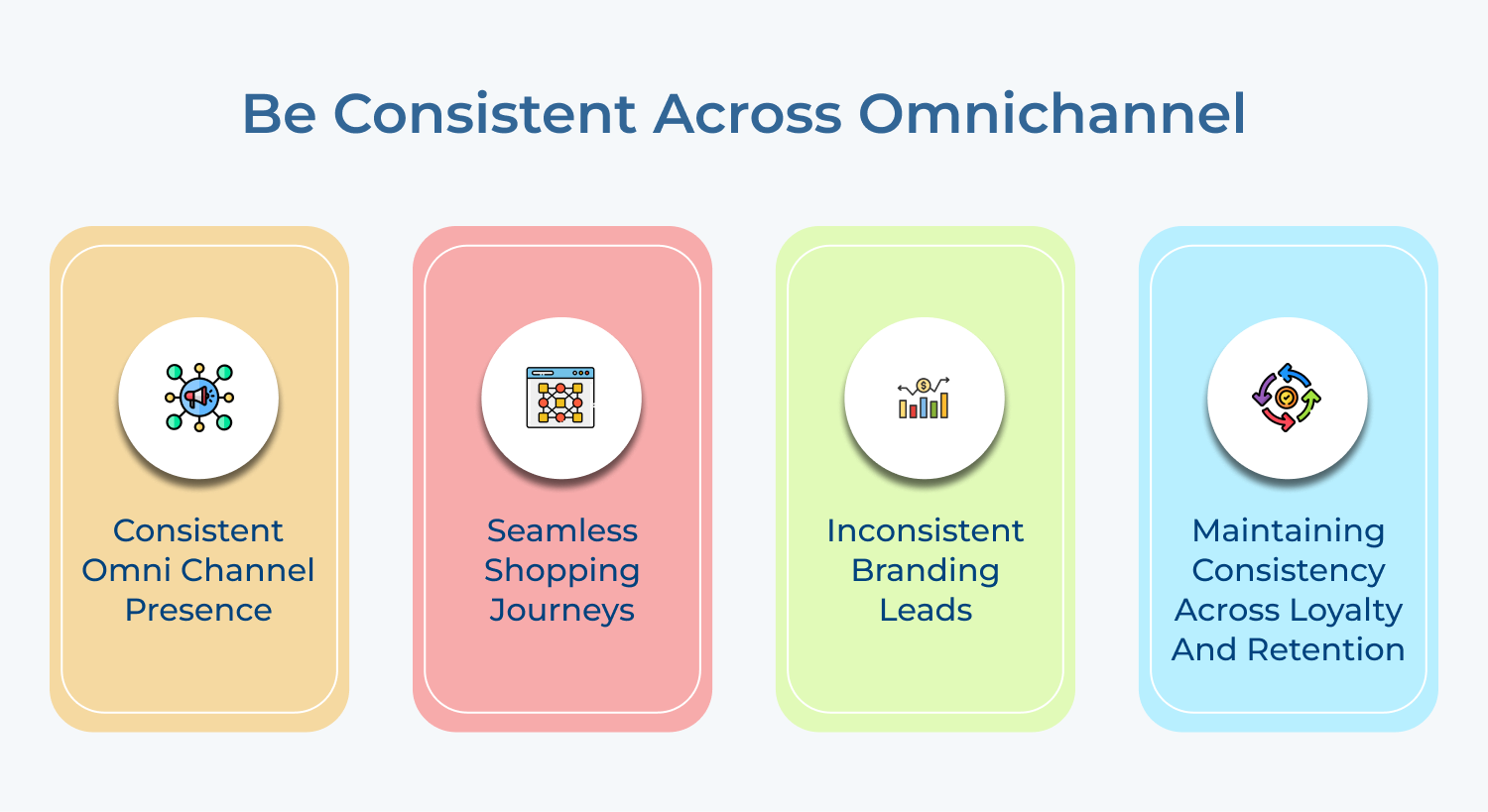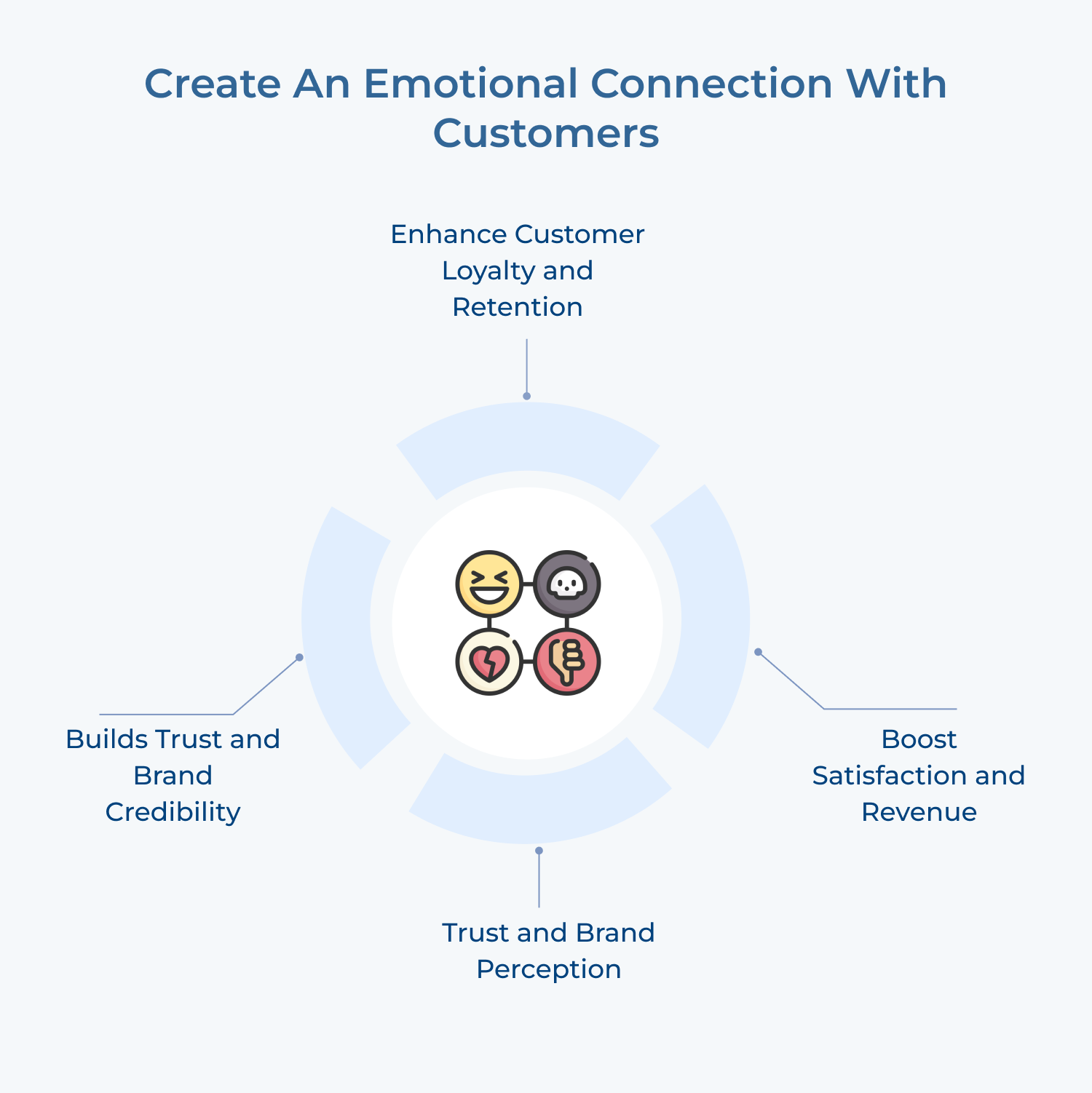1. Definition
Customer engagement refers to the ongoing interactions and relationship-building efforts between a brand as well as its customers. Here, you create meaningful connections with customers that go beyond a regular business transaction.
Customer experience is the overall perception and feelings customers have after interacting with a brand. It encompasses the entire customer journey, from the first point of contact with a brand to post-purchase activities.
2. Focus
Customer engagement focuses on creating purposeful interactions, building a sense of loyalty and commitment from the customers. It has active participation from customers through various channels such as social media, email marketing, etc. Customer experience, on the other hand, strives to provide a seamless, enjoyable, and memorable experience for customers at every stage of their interaction with a brand.
3. Scope
Customer engagement is a broader term that encompasses various activities such as social media interactions, email marketing campaigns, personalized messaging, loyalty programs, and customer feedback. It aims to initiate and maintain active interactions with customers to keep them engaged as well as connected to the brand. Customer experience covers the entire customer journey from initial contact to post-purchase support. It has a wider scope as it covers every touchpoint and interaction a customer has with a brand.
4. Duration
Customer engagement is an ongoing process that requires continuous effort to maintain the customer’s interest and involvement with the brand. It aims to build long-term relationships and loyalty. Customer experience encompasses the entire duration of each customer interaction with the brand, including before, during, and after the transaction. It can leave a lasting impression that influences their perception and future interactions with the brand.
5. Metrics
Customer engagement is measured using metrics such as customer engagement score, social media mentions, click-through rates, and customer satisfaction surveys. These metrics help track customer interactions as well as gauge their level of engagement. Customer experience can be measured through metrics such as Net Promoter Score (NPS), customer satisfaction ratings, repeat purchase rate, and customer loyalty. These metrics provide insights into the overall experience a customer has with a brand.
6. Purpose
The purpose of customer engagement is to build strong relationships, increase customer loyalty, and encourage repeat business. It aims to cultivate a community of brand advocates who actively promote as well as recommend the brand to others. The purpose of customer experience is to create positive brand perceptions, enhance customer satisfaction, and differentiate the brand from competitors.
7. Approach
Customer engagement requires active interaction from both the brand and the customer. It involves personalized marketing messages, social media engagement, and frequent communication. Customer experience requires a customer-centric approach, concentrating on delivering consistent and exceptional experiences at every touchpoint. It involves optimizing processes, providing knowledgeable customer support, while ensuring a smooth and enjoyable user experience.
8. Impact
Effective customer engagement can render a strong customer base that is more likely to repurchase and recommend the brand. A positive customer experience can lead to customer loyalty, positive word-of-mouth referrals, and increased brand reputation. It differentiates a brand from its competitors and attracts new customers through positive reviews and recommendations.
What is The Connection Between Customer Engagement and Customer Experience?
Customer engagement and customer experience are two crucial aspects of building a successful business. While they may seem like separate concepts, they are very much connected and rely on each other to achieve success.
The connection between customer engagement and customer experience is vital for businesses for several reasons:
- Building long-term relationships: Engaging with customers and creating positive experiences are both crucial for building long-term relationships with customers. By combining the two, businesses can create a loyal customer base who will keep coming back.
- Improving customer lifetime value: Engaged customers who have had positive experiences with a brand are more likely to spend more money over time. The combination of customer engagement and customer experience increases their customer lifetime value.
- Driving business growth: Engaged customers who have had positive experiences are more likely to refer friends and family to the brand, leave positive reviews, while becoming advocates for the brand. It helps to drive business growth and attract new customers. Customer-centric businesses report profits that are 60% higher and above than compared to the ones that have failed to focus on it.
Strategies for Improving Both Customer Engagement and Experiences
Improving customer engagement as well as customer experience requires a combination of that focus on the entire customer journey. Here’s the list of the most effective ones!







